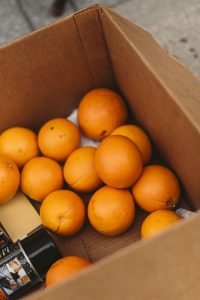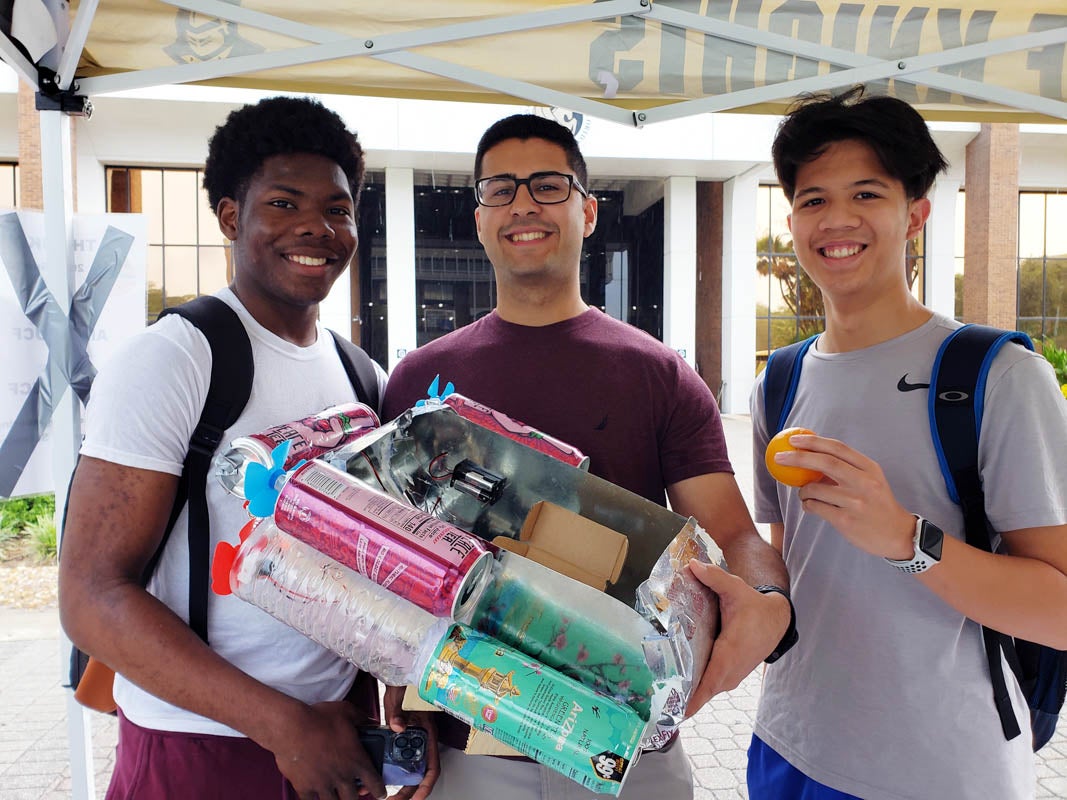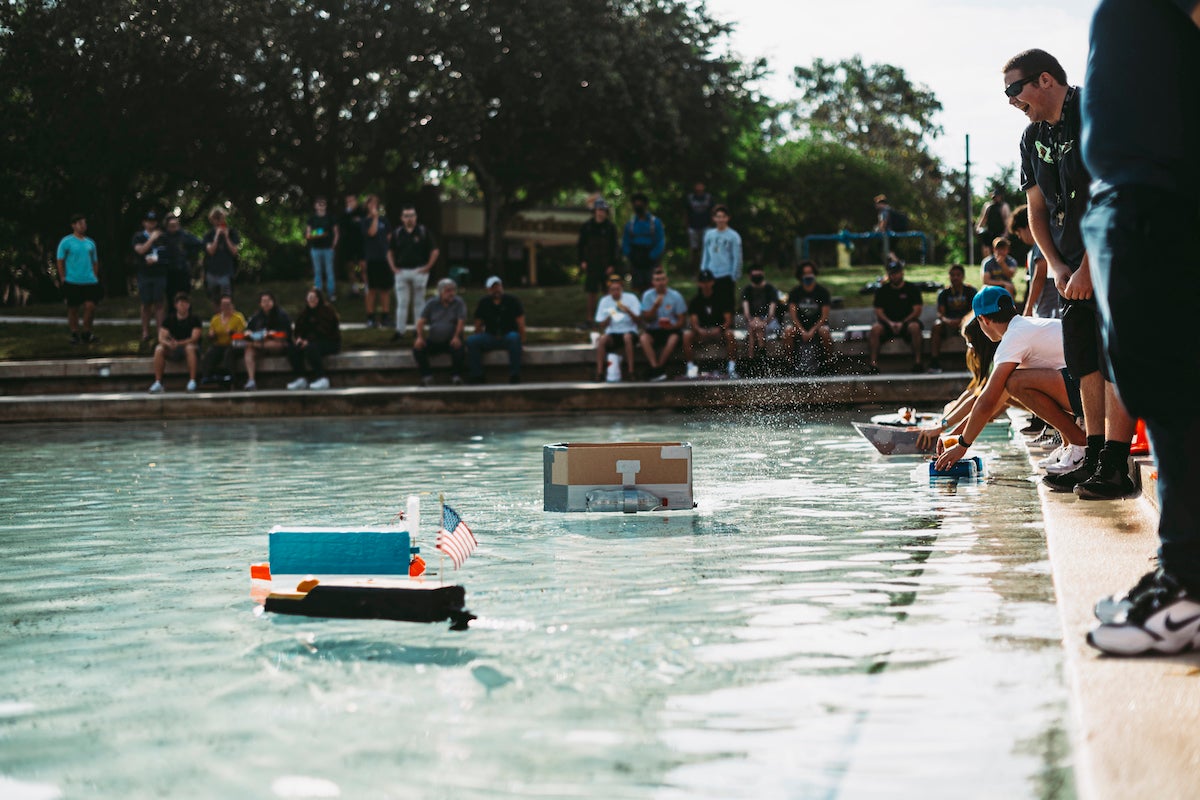It takes a boatload of student ingenuity and lots of oranges to pull off the Great Navel Orange Race at the University of Central Florida’s iconic Reflecting Pond.
Created 25 years ago by Professor Manoj Chopra and his colleagues, the Great Navel Orange Race is a rite of passage for first-year engineering students. The all-day event showcases students’ handcrafted self-propelled vessels, which are evaluated on how well they can carry a half-pound orange while racing around the Reflecting Pond. Boats must follow a required route, aiming to clock the fastest time in under five minutes. Boats that actually make it to the finish line and win their early race heats get to compete in the final races of the top 16 teams for the winning title.
Participating is a requirement for students in UCF’s Introduction to Engineering course and represents the first hands-on engineering experience for many first-year students.

Students must design and build their boats within strict rules that provide engineering challenges, such as buoyancy, propulsion, material costs and trade-offs between vessel weight and speed. The rules include a variety of prohibited propulsion methods, including some non-traditional methods attempted in the past, such as compressed gas, assistance from animals and Mentos mints.
Materials for the boats must not exceed $80, and students must turn-in their receipts to prove it. Many boats on race day are seen with recycled soda bottles and lower-cost material, such as foam, instead of higher-cost wood.
“Creating a boat that can carry an orange and race around the reflecting pond is much more difficult than it sounds,” says course instructor Jacqueline Sullivan ’89 ’91MS, a UCF engineering alumna.
Sullivan has taught the Introduction to Engineering course for six years, and says the goal of the boat race — the lab portion of the course — is to teach students the basic steps of the engineering design process by immersing them into a team-based project.
“Early in the semester students are placed onto a team,” Sullivan says. “Along the way they learn critical soft skills and technical skills that will help them become more creative and more confident engineering students.”
The experience reinforces the importance of teamwork, project scheduling, budget planning, technical writing, engineering graphic design skill, and hands-on building skills, such as soldering.
“During the pre-race “test day” in the pond, students experience technical difficulties with their boats and work hard to overcome these challenges,” Sullivan says.

Mechanical engineering majors Fiifi Baiden and Francisco Perez Green, and computer engineering major Vinson Guzman, built their boat with recycled drink cans and water bottles to keep costs to a minimum.
“We drink this stuff every day so we put the containers to use,” Perez Green says.
They tested the boat in Perez Green’s swimming pool.
“Our boat was going really slow and it started leaking,” he says, adding that the experience helped the teammates understand the collaborative engineering process.
“We learned about practicality, working as a team, and improvising to accomplish our goal,” Baiden says.
Sullivan credits teaching assistants and graduate teaching assistants who play a key role in supporting more than 1,200 students enrolled in the Introduction to Engineering course.
“Many students who took the class and loved it come back after a year or two as TAs by helping the younger students — they are good mentors to the freshmen,” Sullivan says.
Next year’s Great Navel Orange Race will provide UCF engineering alums a chance to reconnect with the competition, according to Sullivan.
“We plan to involve alumni next year to race and help students with expenses (through sponsorships) because 275 student teams can go through lots of solder, soldering irons, foam, glue sticks and motors.”
This year’s race was sponsored by the UCF College of Engineering and Computer Science, and UCF’s student chapters of the American Institute of Aeronautics and Astronautics, and the American Society of Mechanical Engineers.




